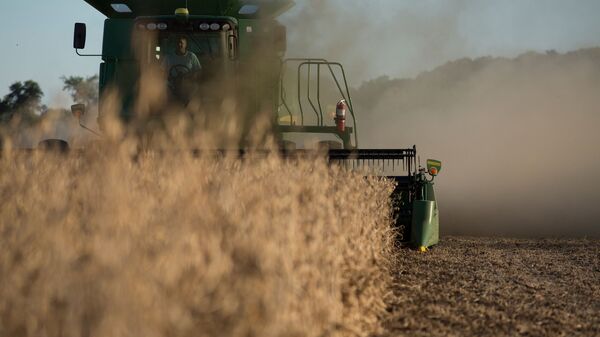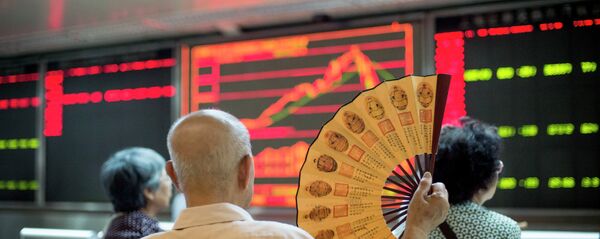Kristian Rouz — As trade tensions with the US escalate, Beijing is seeking a massive readjustment of supply chains in its agricultural sector. Chinese officials say they can replace imported soybeans — a crucial staple of US-China trade for decades — with alternative meals.
In addition, Beijing has recently implemented tariffs on meat imports from the US, also fuelling the expectations of increased food inflation in China.
The so-called "trade war" between the US and China — particularly, Beijing's retaliatory 28-percent tariffs against US soy — have put the sustainability of China's livestock into question. Many economists have expected a rise in meat prices in China's domestic market as a result of the exchange in tariffs.
"This could be a major issue for China," Loren Puette of the Taiwan-based think tank ChinaAg said.
READ MORE: Canada Sets Conditions for Trade Deal With China
However, China's central government is now seeking to diversify the sources of animal food and meat. Last week, Beijing announced that China's soybean imports have dropped 13 percent year-on-year, while imports and domestic production of other crops are gradually gaining momentum.
Additionally, the Chinese government said it would reduce protein levels in its livestock feed.
China's Feed Industry Association said protein levels in hog feed would be reduced by 1.5 percent, and those for chicken — by 1.0 percent. This, officials argue, would facilitate a reduction in the demand for soybeans in the agricultural sector.
The Chinese government also said that it plans to reduce China's consumption of soybeans by 11 mln tons from the some 71 mln tons it consumed in the 2017-2018 marketing year.
"This will have a very important impact on industry, but it's still not clear how long it will take to be fully introduced," Yang Linqin of Cofco Futures said.
Some experts have suggested China will have to turn to other crops to feed its livestock regardless of the price and country of origin. Additionally, China's trade tensions with the US could bolster the exports of soybeans from third-party countries such as Argentina.
"There simply aren't enough soybeans in the world to satisfy Chinese demand" without US supplies, Michael Magdovitz of the London branch of Rabobank said.
READ MORE: US to Give 'Strong and Vigorous Response' to China's Actions — Pompeo
However, US officials said that China has so far amassed significant volumes of US soybeans, which could last for a while. According to the USDA, over the past few years China has been exporting more soybeans than its agricultural sector could possibly consume.
China's advance purchases of US soybeans for the marketing year 2018-2019 reached almost 70 percent of Beijing's total soybean purchases in 2017-2018. Meanwhile, at the beginning of 20-18-2019, China's imports of US soybeans dropped a whopping 97 percent, the USDA said.
However, the USDA also observed massive increases in soybean exports at the beginning of the 2018-2019 marketing year to such countries as Argentina (+100 percent) — a major soy producer itself — as well as Italy (+200 percent), Spain (+161 percent), India (+100 percent), the Philippines (+292 percent), and Malaysia (+133 percent).
The US posted a decline in soybean sales to such countries as Canada (-12 percent), Japan (-34 percent), as well as Turkey, Venezuela, Morocco, and Pakistan.
For its part, China's main economic planner — The National Development & Reform Commission (NDRC) — has entertained plans to change livestock rations as early as this past July. The NDRC has suggested the nation's major food companies — such as Dabeinong, CP Group, and Hefeng Group — provide alternative rations for livestock, primarily, hogs.
READ MORE: Chinese to Have More Indian Rice on Their Plates
Additionally, the Chinese Agriculture Ministry said one of the world's major soybean producers — Brazil — could substitute the US as China's main supplier of the strategically important crop.
However, there is still little clarity regarding the implementation of Beijing's plans — as China's soy-buying season is just about to begin in the coming weeks.




